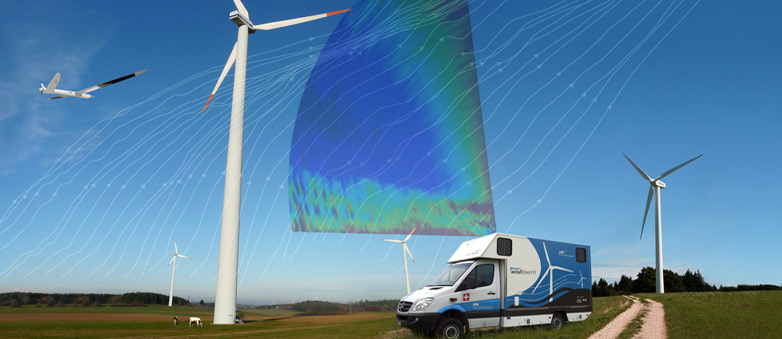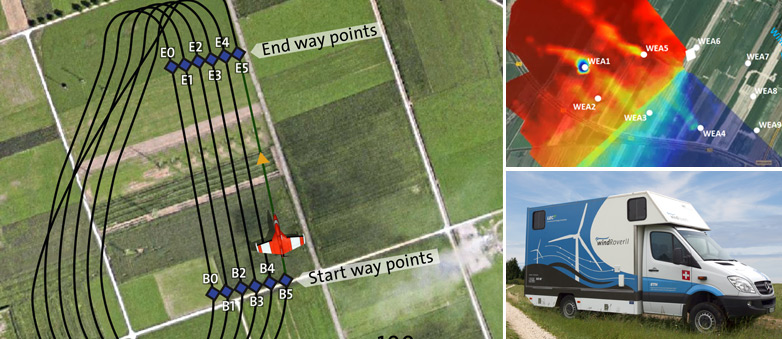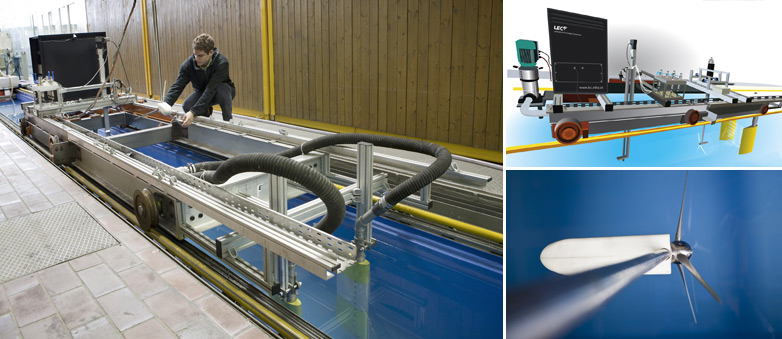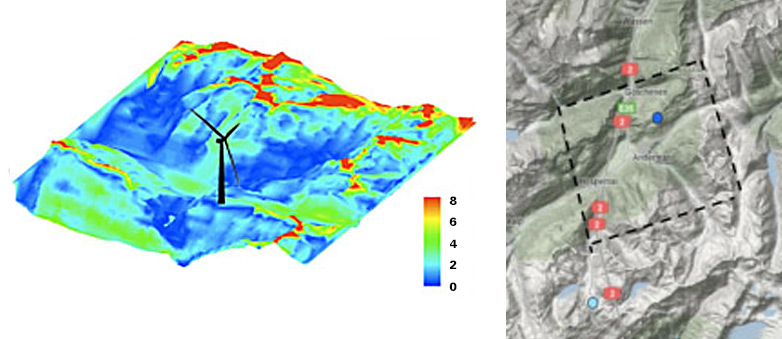Wind Energy
Our present wind energy activities are focused on: field experiments on full-scale wind turbines; controlled experiments on dynamically-scaled wind turbines; and simulation of atmospheric and wind farm flowfields. These activities leverage the Laboratory’s other activities in more conventional energy conversion technologies to produce cutting-edge integrative research that will improve performance, reduce costs and maintain reliability of wind energy projects.
Full-scale experiments provide both performance data and detailed flowfield measurements that are used for validation of LEC’s wind simulation tools. The measurements are a challenge as modern wind turbines are large, with rotor diameters of up to 100 meters. Therefore, a novel approach of mobile LIDAR and instrumented UAV are being developed at LEC.
LEC’s windRover II is a mobile laboratory that is equipped with a 3D scanning LIDAR system. windRover II complements LEC’s other field measurement system, windFlyer II; whereas the instrumented drone, windFlyer II, has short range (up to 1.5km) and high spatial resolution (5m), windRover II provides the capability of making measurements of the wind (speed and direction) over long range (up to 6km) and relatively lower resolution (30m). Thus windRover II can be used to detail the wind field either over a whole region or a wind farm, or to characterise the wakes of single or multiple wind turbines within a wind farm. Furthermore, windRover II is equipped with novel instrumentation to measure the aero structural behaviour of wind turbines.
The instrumented UAV uses LEC's fast response aerodynamic probe technology provide high spatial resolution (~5m) measurements of wind (speed, direction and turbulence). After programming the desired flight plan into a ground control station, the instrumented UAV uses GPS information to fly autonomously around the wind turbine. On-board sensors control the speed and attitude of the drone, and it can be flown in a controlled pattern around the wind turbine.
The measurements in the field are complemented by performance and detailed flow field measurements on model wind turbines in our dynamically-scaled wind turbine facility (WEST facility). The facility is a water-towing tank with a carriage to tow a model wind turbine through the stationary water.
This facility provides for close matching of the full-scale wind turbine’s Reynolds number in a controlled environment. A novel technique, incorporating the use of an in-line torquemeter, has been developed to yield accurate measurements of wind turbine performance and unsteady loading. Detailed flowfield measurements using hydrodynamic probes, hot-film anemometry and PIV can also be made in the facility. Ongoing studies include floating wind turbines, blade icing, gusts, turbulence and wake interactions.
LEC has developed Immersed Boundary Method (IBM) models for modeling wind flow over terrains and for modeling wind turbines in wind farms. To enable the analysis of atmospheric flows in complex terrain, LEC’s IBM terrain model uses only a single Cartesian grid to simulate the wind flow for a complete wind rose; thus there is up to 70 times less time required for grid generation compared to using a body-fitted computational grid. An immersed wind turbine model has also been developed. This model simulates both the blockage effect and energy extraction of a wind turbine with a grid resolution that is comparable to that of the microscale simulation of wind. Thus in our advanced simulation tool, the effects of topography, multiple turbines and wakes, etc can be accurately and quickly solved. Our high-fidelity numerical site calibration tools, leverage LEC’s turbomachinery CFD capabilities, and are being further developed to reduce both the uncertainty in wind farm energy yield as well as the development time of wind farm projects.




